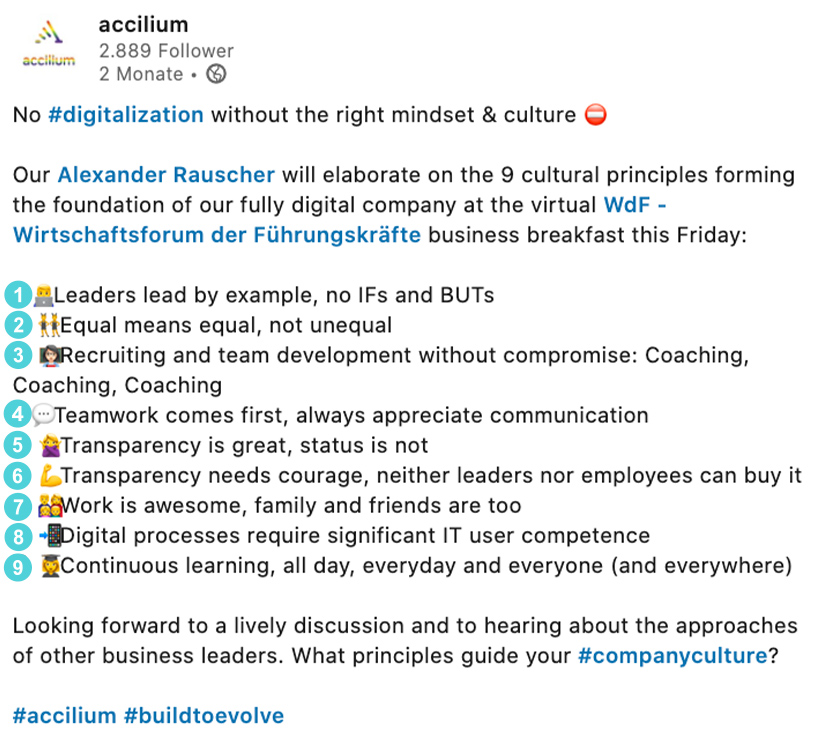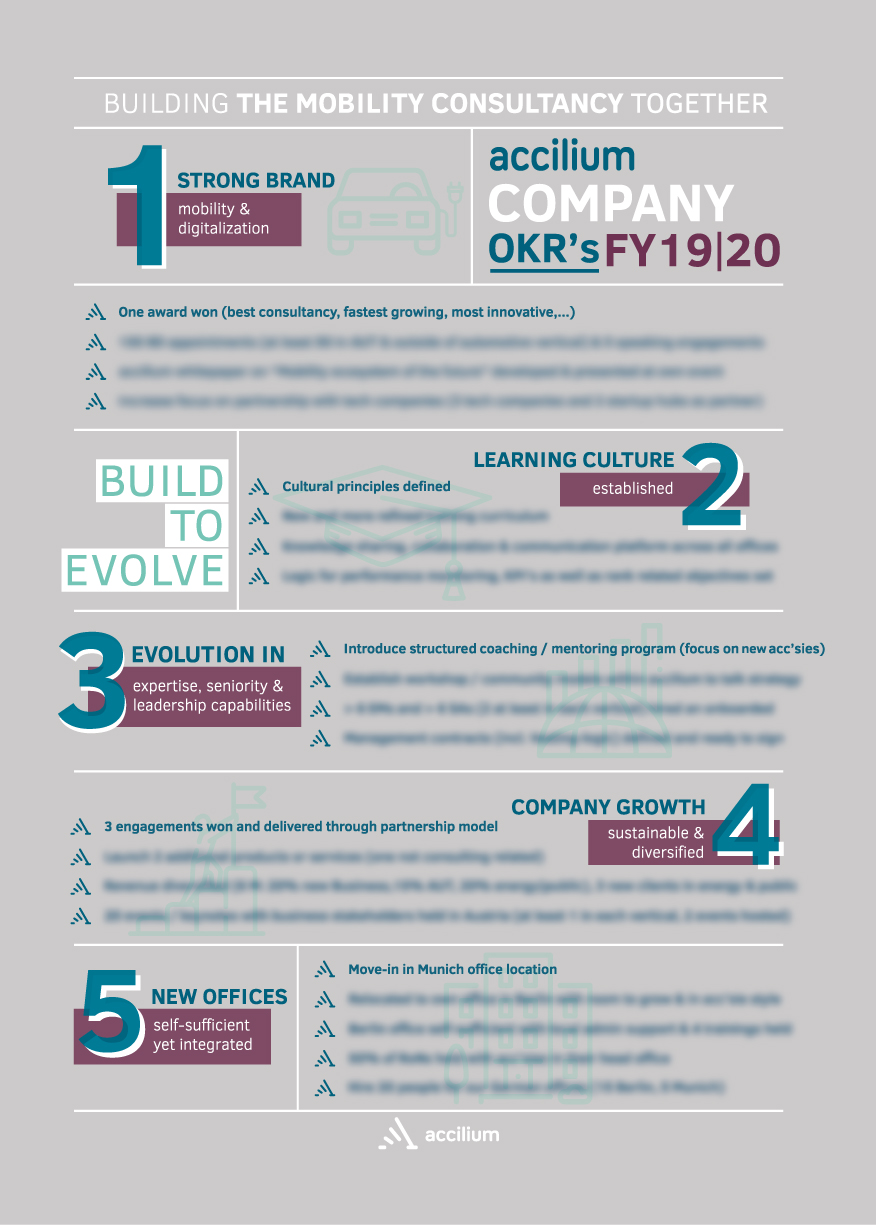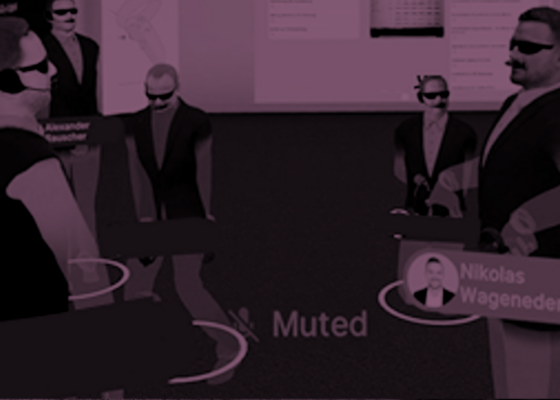Estimated reading time: 3 minutes
We recently published the nine cultural principles (see below) for building a fully digital company, that also lay the foundation for accilium’s corporate culture. The principles simultaneously promote teamwork and self-organization, which is significantly reinforced by our company-wide target agreement method: OKRs.
OKR stands for Objectives and Key Results and provide a framework for both individual and company goal setting. The method is employed by tech giants such as Google, Amazon, or Facebook to organize their mostly agile teams.

OKRs enable an organization to coordinate personal and company goals, which allows leaders to empower their teams and colleagues to exploit their full potential and simultaneously contribute to the greater good of the company because of its holacratic traits. Especially during the global COVID-19 pandemic, which established home office as the new normal, such techniques are essential to increase motivation and provide focus.
Aligning personal and company goals using a common framework
The OKR methodology enables companies to clearly communicate the organization’s goals and to structure them in a transparent way. Additionally, personal or team goals can be aligned with the overarching company or business unit goal setting framework. As individuals formulate their OKRs autonomously, independence and self-organization are promoted. By synchronizing company and personal OKRs, single employees are woven into an organizational network.
At accilium we disclose both personal and company OKRs publicly within the company after our OKR workshops to additionally foster communication and teamwork among colleagues. This leads to an increased exchange about the achievement of a team’s or individual’s objectives and development as well as to mutual support, always linked with measurable results.
How do OKRs work?
The OKR framework is split into two major elements:
- Objective: The objective represents the North Star of an endeavour and defines where to go.
- Key Results: Key results are corresponding targets which define how to achieve the overall goal. Consequently, if all key results are achieved, the objective is accomplished.
While objectives do not necessarily need to be measurable, key results should follow the SMART logic and therefore be specific, measurable, achievable, reasonable and time bound. However, it needs to be noted that an essential characteristic of OKRs is to set highly ambitious goals as key results. To promote this, a grading system for key results from 0.1 to 1.0 can be added for reflection purposes, which enables users to assess their achievement rate.
If a key result is for instance achieved to 90%, it is graded with 0.9. This supplementary dimension then provides the adjustment basis for the following OKR cycle. OKR cycles, the period between defining objectives and key results and rating them, can vary from one firm to another. This is ideally adjusted to corporate/personal performance review cycles.
An example for OKR execution and corporate synchronization
In order to illustrate the employment of the OKR methodology as well as the alignment of corporate with personal goals, an excerpt of the accilium 2019/2020 OKRs is shown below as an example. Among the achieved key results can for instance be named brand eins’ consulting award, which we won in March, for the objective ‘strong brand in mobility & digitalization’ or the definition of the aforementioned cultural principles for the objective ‘learning culture established’.

While synchronizing personal development goals and corporate objectives is not always easy, OKRs at least provide the right framework for it. In this personal example, an extra-occupational MBA is linked with company and employee development – while the master’s degree is an objective of the individual employee, the result is synchronized with the company’s agenda:


After all, this example shows how the OKR methodology can be used as an effective method to provide a goal setting framework for both companies and employees. As employees can be integrated into the corporate goal definition and attainment process using the methodology, motivation is increased, and self-organization is promoted. If this sounds interesting to you and you want to know more about OKRs and how you can implement the method in your company, feel free to reach out to us.

Christian Schneider
Partner





 ISO/IEC 27001:2013 certified
ISO/IEC 27001:2013 certified